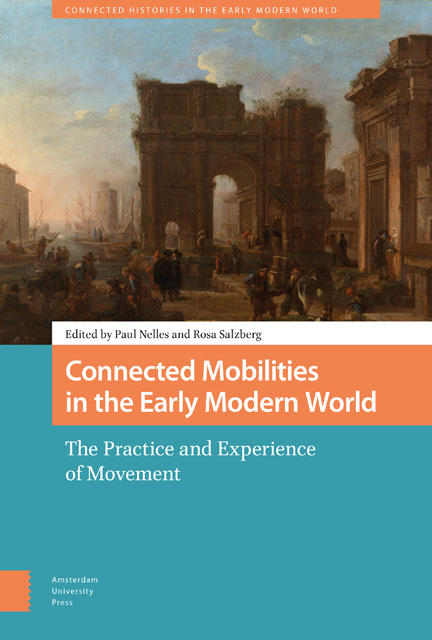2 - Wading Through the Mire: Mobility on the Grand Tour (1585â1750)
Published online by Cambridge University Press: 15 June 2023
Summary
Abstract
Traditionally, mobility on the Grand Tour has been reduced to a highly stereotyped account of travellers facing bad roads, the blistering cold, steep mountain passes, highwaymen, and privateers. New evidence from Dutch and Flemish travel journals enables us to draw a much more subtle picture. In fact, early modern travel behaviour was gradually reshaped by the coming of new transport and communication means, as postal networks, coaches, and stone-slab paved roads gradually reduced the – real or imagined – dangers and discomforts of travelling. This led to a new appreciation for the landscape in between cities and also reshaped traditional travel itineraries and destinations. Last but not least, transport and communication innovations remodelled the emotional and symbolic value of the Grand Tour as a rite de passage.
Keywords: Low Countries; early modern Italy; transport; travel writing; itineraries; communication
Even though mobility was an essential part of the Grand Tour, it has garnered little if any (serious) interest in classic historiography. Travellers covered hundreds of miles on horseback; embarked on sailing ships, feluccas, and barges; were jolted to pieces in carriages or nestled in sedan chairs; but their experience is rarely – if ever – examined in more than a few pages. Moreover, most classic reads on the Grand Tour do little more than to hammer home some time-worn clichés, whereby early modern travel is reduced to a highly dangerous, strenuous, and uncomfortable experience. Travellers had to face bad roads, the blistering cold, steep mountain passes, ferocious animals, privateers and highwaymen, spectacular accidents, and myriad other calamities on their way to Rome. Taking these stories at face value, experts produced a highly romantic image of early modern travel that is contrasted to our modern – bland and uneventful – tourism. Classic historiography also largely fails to move beyond the static image of muddy roads and faltering communication, as if early modern Europe was frozen in time. It is a legacy of Fernand Braudel and other Annales scholars, who portrayed distance as enemy number one in early modern Europe.
More recently, however, experts have shown how transport was slowly but surely revolutionized – or at least radically altered – by the rise of postal networks, stagecoach and barge services, metaled roads, and other innovations.
- Type
- Chapter
- Information
- Connected Mobilities in the Early Modern WorldThe Practice and Experience of Movement, pp. 63 - 86Publisher: Amsterdam University PressPrint publication year: 2022



